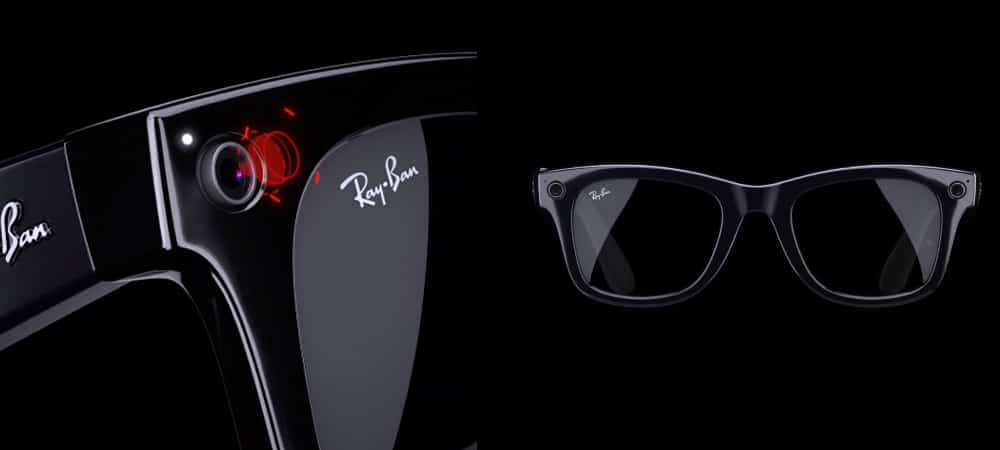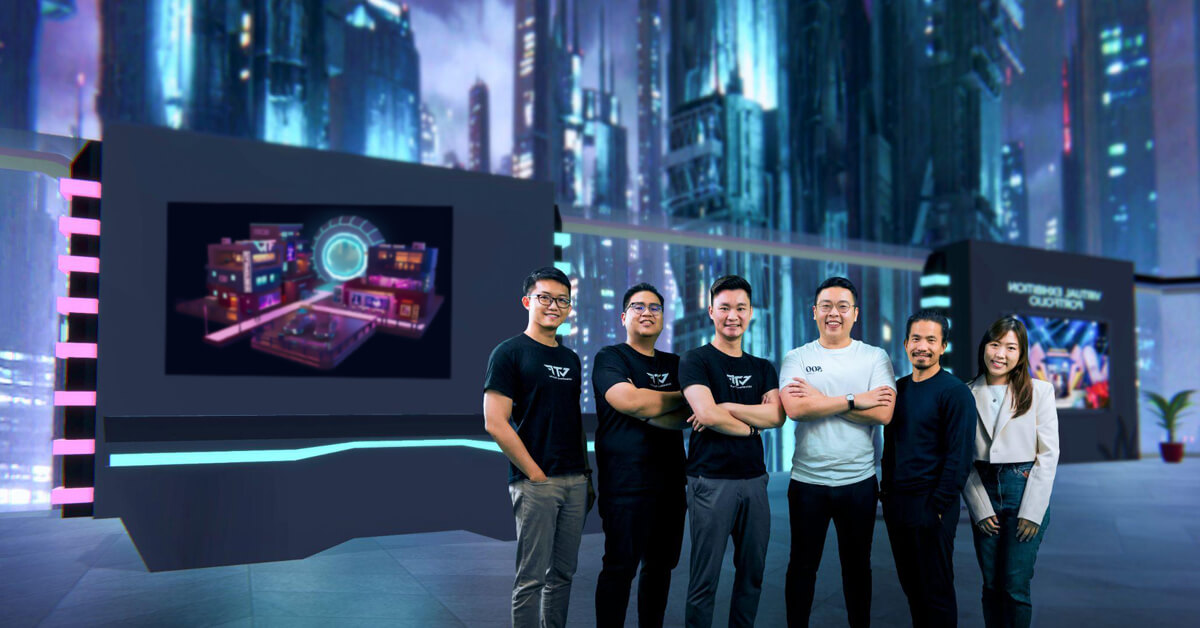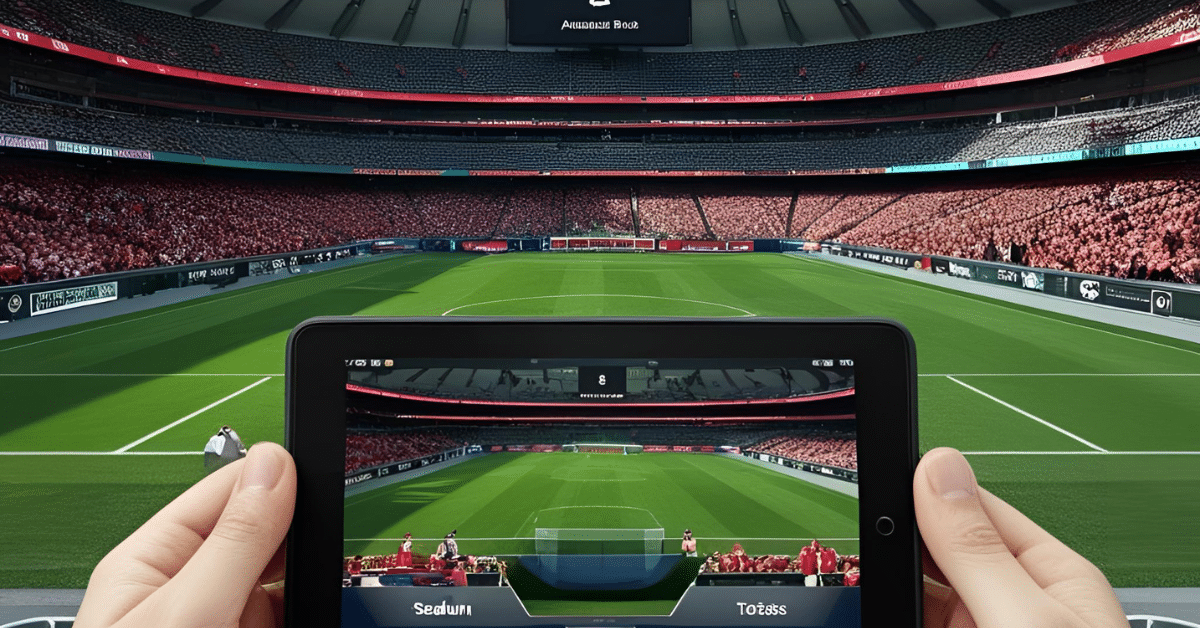Meta metaverse comes up a lot these days. It’s little wonder given that it describes an enticing, futuristic, virtual landscape created by one of the world’s biggest tech giants. But getting the most out of it means understanding what it is and where it’s going. And that’s exactly what you’re about to learn about as you continue reading.
Quick Menu:
- The Metaverse in Short
- Introducing Meta Metaverse
- Reasons for Meta Entering the Metaverse
- How the Meta Metaverse Is Realized
- Technology & Devices Facebook is Developing to Enter The Metaverse
- Who Else Is Building the Metaverse with Meta Metaverse?
- Meta Metaverse: Building It Responsibly
- Meta Metaverse Criticisms
- The Future of Meta Metaverse
The Metaverse in Short
The Meta metaverse is, of course, a part of the larger metaverse. And the metaverse is a huge subject unto itself. But in short, you can think of the metaverse as a digital universe that exists alongside our own. You can fully leap into it with virtual reality. Or you can bring some of the metaverse into the physical world with augmented reality and mixed reality. It’s a vast digital universe available to try out right now. You can learn more about the larger metaverse in the article “Metaverse Guide; Understanding The Basics Will Open Up a New World”.
Introducing Meta Metaverse
A lot of people didn’t know what to think when Mark Zuckerberg rebranded Facebook as Meta. But Zuckerberg has clarified that he sees the Metaverse as the “successor to the mobile Internet”. And the mobile Internet was itself a successor of sorts to the more tethered Internet people accessed on bulky PCs. In short, Zuckerberg sees the Meta metaverse as the next big thing to bring the world closer together through technology. Meta’s metaverse is focused on experience. You don’t just use the Metaverse – you experience it.
This is similar to the way the passive Web 1.0 evolved into a more interactive Web 2.0 and 3.0. But the metaverse, unlike the standard Web, is a true extended reality—a reality where you don’t simply get the technical details of something. You’re not merely clicking elements to load an office document or send plain text to a friend. You’re getting the full experience of socializing at work or seeing friends smile when they hear what you say. Perhaps unsurprisingly, for the company formally known as Facebook, their metaverse is all about communication. It’s using technology to fight against isolation and truly bring people together.
Video: Introducing Meta
Reasons for Meta Entering the Metaverse
Mark Zuckerberg’s view of the metaverse as the next iteration of the Internet can’t be stressed enough. Evolutionary steps in Internet development are necessary to end users. But it’s an essential component of companies that are built on the Internet. Facebook in particular, essentially used the Internet as its platform. Google has Android and ChromeOS. Apple has OSX and iOS. Microsoft has Windows. And even Amazon has Fire OS, their Android fork. But Facebook was a platform built entirely on the Internet, which means that Facebook’s platform needed other companies’ platforms to work.
And Facebook is required to pay for that privilege – usually about 30% of total sales to the platform’s owners. But the Meta metaverse changes that. Facebook’s rebranding to Meta signaled that it was building its platform. The company is making its own hardware, operating environment, store, and shared ecosystem. This marks a huge change for Meta and highlights exactly why it’s putting so much work into the metaverse. The steady increase in metaverse news and development highlights that the metaverse is the future. And it’s a future where Meta will have its dedicated platform. Likewise, they’re rushing to get there before their current competitors do.
How the Meta Metaverse Is Realized
You’ve seen why Meta is so invested in the metaverse. But there’s an equally important question of how the company is doing so. How does a company build an entire digital universe? Meta’s answer to that question is to create a solid infrastructure and then build specific specialized components. While many of these elements are in development, the following are the most important.
Horizon Home & Horizon Worlds
Horizon Home highlights how fast the Meta metaverse is growing. The service started out as more of a simple user interface with abstract capabilities. But this concept of a simple home base turned into a real virtual home. Now when you put on your Quest headset, you’re projected into a true virtual home that can be tailored to your unique tastes. And it was recently even expanded into a true social sphere where you can invite friends and family just to hang out or enjoy various forms of entertainment.
Home also acts as a gateway to Horizon Worlds. Worlds is what many people would think of as the standard metaverse. It’s a vast social universe where you can play and socialize. But you also have the freedom to build and create. The Worlds system supports an easy-to-use scripting system that lets you create anything from paper airplanes to complex games.
Video: Horizon Worlds | Meta Quest 2
Horizon Works
Horizon Works is often described as the future of work. It’s a Meta metaverse that’s tailored for professional use. You can think of it as the office district within Meta’s larger universe. Users log in with a Work Account that helps to facilitate business-centered transactions. And once you’re logged in you can experience something truly unique. Works isn’t just telecommuting. It’s an actual office environment that combines the best elements of offline and online environments.
For example, it gives you the social element that’s often sorely lacking within telecommuting experiences. You can feel the hustle and bustle of your entire team working together to get projects taken care of. But Works also provides the best of the digital world by offering limitless space and creative empowerment. You can choose and modify environments and even take your projects between offline and online areas using integrations with Dropbox, Instagram, Slack, and Facebook.
Video: Infinite Office
Horizon Venues
Entertainment is a massive part of the physical world. And it’s equally significant in the digital universe found in the Meta metaverse. But what if you didn’t have to choose between one or the other? That’s the promise of Horizon Venues. It brings you the full scope of entertainment from both the physical and online spaces. For example, you’ll eventually be able to use Venues to attend concerts with friends in the physical world virtually. Their augmented reality and your virtual reality will create a shared experience at the event. Horizon Venues is still in beta, but it’s already amazing.
Video: Venues (Beta Early Access) | Oculus Quest Platform
Gaming
Metaverse games are among the biggest draws of the digital frontier. Who wouldn’t want to actually jump into a game that’s essentially a living world? The Meta metaverse offers several variations on that theme. Grand Theft Auto: San Andreas for the Quest 2 is perhaps the most anticipated title. But Meta’s already making history with its games. For example, Beat Saber has already earned more than $100 million on the Quest alone. But on top of everything else, there’s the fact that the Meta metaverse is inherently social. That means that you can enjoy things like chess or board games.
Video: Best VR Games to Play With Your Friends
Fitness
One of the harder parts about staying in shape is finding the motivation to go to the gym. But what if the gym could come to you? That’s part of the promise of the Meta metaverse, thanks to Quest 2’s Active Pack. A whole host of software and accessories will turn your Quest 2 into the ultimate home gym. New grips and exercise-optimized facial interfaces will make it easy to keep things running smoothly even when you’re sweating. And new software like FitXR’s fitness studio and Player 22’s bodyweight exercises will ensure your workouts stay fun.
Video: Unbelievably fun fitness is ready | Meta Quest
Education
The Meta metaverse has obvious applications for both work and play. But it’s also an excellent tool for education. For example, imagine if surgeons could hone their skills outside of the operating room by using virtual reality training sessions. Or if schools could plan field trips to anywhere in the world without ever leaving the classroom. Organizations like Byjus FutureSchool, Urban Arts Partnership, and Peace Literacy Institute are already using the Meta metaverse for educational purposes. And Meta’s recent announcement of a $150 million initiative to train a whole new generation of creative minds highlights the platform’s importance.
Video: Education in the metaverse
Presence Platform
The metaverse isn’t just about jumping from the physical world into the digital. Augmented reality lets you bring digital content into the physical world. Meta’s building on this idea through its Presence Platform. Presence encompasses several different software development kits and application programming interfaces. Developers can use these new techniques to create unique blends of analog and digital experiences. While the development tools are still relatively new, programmers have already created some fantastic apps. It even allows for distribution through both the Oculus Store and App Lab. And new Presence tech is on the way.
Video: Mixed Reality with Presence Platform
Spark AR
Spark is one of the Meta metaverse elements that’s heavily using augmented reality. Augmented reality already exists through mobile devices like smartphones. But developers are working to create more advanced iterations of this technology through implementations like smart and AR glasses. Spark helps to push this concept forward by offering enhanced tools to AR developers. This makes it easier than ever to place digital items in the physical world. Not just as passive landmarks but entities that people can interact with. Meta’s even taking this to the next level by offering training and certifications to Spark creators.
Video: Expanding Spark AR Capabilities
Technology & Devices Facebook is Developing to Enter The Metaverse
You’ve been able to see why Meta is so devoted to the Meta metaverse. And you’ve seen how the company is turning its hopes for the metaverse into a concrete reality. But there’s one remaining piece needed to create a full picture of Meta’s new platform. How do you enter Meta’s metaverse? There are sure to be numerous new methods to enter their metaverse in the future. But the following devices highlight the best tools Meta created up to this point to enter into its metaverse.
Meta Quest 2
The Meta Quest 2, also known as the Oculus Quest 2, represents the culmination of Meta’s various paths toward virtual reality. The original Oculus marked the point where virtual reality went from proof of concept to established fact. It was arguably the first VR system viable for the home market in terms of capabilities and price. And the idea was taken to the next level with the Quest and then Quest 2. You can take a deeper dive into the history and specs of the Quest 2 in the article “Oculus Quest 2; Overview, Features, Accessories, and More!”.
Video: Oculus Quest 2
Meta Quest Pro
The Meta Quest 2 is an undeniably fantastic product. It has a perfect balance of features and cost that makes virtual reality something almost everyone can enjoy. But the Meta metaverse was built on cutting-edge concepts. And they’ve also been working on a VR headset that pushes the bounds of what modern state-of-the-art hardware is capable of. Until recently, this was known as project Cambria. But this next-gen headset’s finally released under the moniker of the Meta Quest Pro. You can see this virtual reality headset’s true power in the article “Meta Quest Pro; Meta’s Project Cambria Finally Released!”.
Video: Meta Quest Pro
Ray-Ban Stories
What’s the new frontier where science fiction is turning into science fact now that VR is fully established? Many believe that it’s going to be smart glasses. There are inherent difficulties in packing high-tech processing into attractive, stylish glasses. But the Meta metaverse already has one foot in the world of smart glasses through Ray-Ban Stories. At the moment, the glasses primarily capture media to create multimedia stories. But it’s a solid foundation for the future. In the article “Ray-Ban Smart Glasses; Ray-Ban Stories, Features, Prices & More” you can discover what Stories has to offer and where it’s going.

Image attribution: Ray-Ban Stories
Who Else Is Building the Metaverse with Meta Metaverse?
Meta is obviously the most significant driving force behind the Meta metaverse. But you’ve already seen companies like Ray-Ban are participating in their ways. And of course, going to any of the metaverse events shows that there’s also a tremendous amount of help coming from the tech industry as a whole. Zuckerberg has mentioned that nobody can develop the metaverse on their own. It’d be like trying to develop Earth by yourself.
One interesting point is that the Metaverse is interlinked. So companies like Microsoft, Nvidia, and Epic Games are all contributing to the Meta metaverse in their own way by working on some of their implementations. Andrew Bosworth, VP of AR/VR at Facebook, describes this as a “collection of digital worlds” instead of a singular whole. But all of these elements can be linked to a continuous user experience. It’s what makes the metaverse truly limitless.
For more information about metaverse companies, read “Metaverse Companies Building The Future; An Overview”.
Meta Metaverse: Building It Responsibly
Anyone would agree that building an entire world is complex. You’ve seen some of Meta’s technological challenges. But the social issues involving such a huge project can be just as tricky. Thankfully Meta’s put a lot of work into ensuring that the Meta metaverse is built responsibly. Meta’s focused on several key elements to ensure the Metaverse can be fun and fair for everyone. This includes an emphasis on economic opportunity.
Everyone can join in to create, buy, sell, and trade within the metaverse’s economic system. But at the same time, people can also maintain privacy. You’ll always have control over who can access your personal data. This also leads to safety and integrity. Meta is dedicated to keeping people safe when they’re enjoying the metaverse. And finally, these principles are all universally applicable. Equity, inclusion, and accessibility are essential elements of Meta’s metaverse.
Meta Metaverse Criticisms
No huge project is without its detractors. And there are some common criticisms of the Meta metaverse. The following issues are commonly brought up by people concerned about Meta’s new platform.
Privacy Concerns
Technology has become integrated with every part of modern existence. Some people even have heart or respiratory monitors tracking the very engines of their lives. This integration will reach a new peak when people spend more time in the metaverse. And there are concerns about how well the Meta metaverse will protect people’s private data. Likewise, people’s privacy concerns could be turned against them through marketing. For example, dieters might get served junk food ads.
The Public Lost a Lot of Faith in Facebook
When Facebook rebranded to Meta it signaled a refocussing on the Meta metaverse. But this can be a tough sell for people who still need to gain some of their faith in Facebook. The platform has brought countless people together. But it’s also brought a lot of now well-known social media concerns into the forefront of their lives. This is especially concerning for parents who want to ensure their kids have a safe environment both on and offline.
Distracting from PR Crisis
The previously mentioned loss of faith in Facebook has also manifested in another criticism. Some people have accused Zuckerberg of rebranding Facebook as Meta in order to take care of its PR issues. Essentially trying to get rid of Facebook’s PR problems by ditching the name rather than actually addressing them. Critics maintain that Facebook has a complex history of fueling political polarization, disinformation, and mental health issues in both adults and its teenage users.
The Future of Meta Metaverse
Meta has some big plans for the Meta metaverse’s future that are already manifesting. One of the biggest is partnerships with other metaverse brands and Metaverse companies. Ray-Ban Stories is a good example. But Meta will continue to build on those partnerships. Meta is also working toward accessible photorealistic avatars and reconstructed physical spaces that can genuinely bridge metaverse meaning and physical meaning into a singular whole. Meta is always working on more immersive ways to control the metaverse experience. This ranges from AI that can understand the context to wrist-based electromyography that will let you “type” in AR without keyboards.
One of the best things about the Meta metaverse is that you can dive in right now. There’s no need to book tickets or plan vacations. It’s an adventure that’s ready for you the second you decide to try it.
Did You Like This Article About Meta Metaverse?
You might also be interested in the following articles:
- Metaverse Startups; 10 Compelling Metaverse Startup Companies
- Metaverse Trends; Upcoming Milestones for the Digital Frontier
- VR Party; How To Throw Great VR Parties With VR Party Games









Leave A Comment